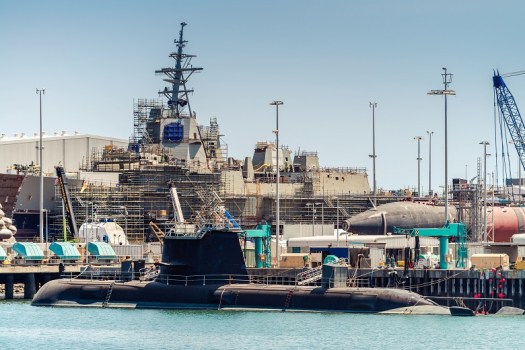
A federal government plan to synchronise military and civil air traffic by purchasing a single management system has been plagued by problems which have seen costs blow out to $4.11 billion and a ten-year delay in delivery, an audit has found.
The plan from the Department of Defence and Airservices to purchase a Civil Military Air Traffic Management System (CMATS) to bring together two air traffic management systems was not good value for public money, an audit from the Australian National Audit Office (ANAO) has found.
The plan, which had an original delivery deadline of 2015 and budget of $1.22 billion, was pushed back to 2026, costing taxpayers upwards of $212 million in the costs of extending legacy systems.
The procurement procedure for the OneSKY system suffered from “shortcomings in the governance framework that meant value for money was not demonstrated”, the report from the national audit office says.
“There is inadequate assurance that the contracted acquisition price is consistent with a value for money outcome for the capability being acquired,” the audit says.
The plan, which was touted by the Department of Defence as a massive cost-saving measure, was plagued by protracted contract negotiations and tender evaluation delays.
The audit also raises concerns about the evaluation process for the purchase of the system.
As well as a 2016 evaluation report warning that the project was not good value for money, a subsequent report, which ultimately resulted in the project being signed off, was prepared by someone who was not authorised to and did not undertake a full evaluation of the offer.
“An evaluation report addressing each criterion, the expected total cost of ownership and whether the negotiated outcome represented value for money, was not prepared by the CMATS Review Board (CRB) and provided to the Airservices Board to inform the decision to sign the acquisition contract,” it says.
“Rather, the Board was provided with a report prepared by the Lead Negotiator, who was not authorised to and did not undertake a full evaluation of the offer. The records of the relevant Board meeting do not identify or discuss the provision of the February 2018 Lead Negotiator’s Report, and do not outline the value for money considerations of the Board.”
Responding to the report, Defence acknowledged that there were failings but maintained the project was value for money.
“There is room to enhance the administrative arrangements supporting and documenting actions and decisions in such a complex program” but maintained the project was value for money.
Airservices Australia, the main entity for the procurement, responded to the audit by pointing to elements of value for money found in the audit, including the fact that program scope requirements were well understood prior to entering negotiations, a clear scope was established for the signed contract and there was appropriate management of price risk in the contract.
Comment below to have your say on this story.
If you have a news story or tip-off, get in touch at editorial@governmentnews.com.au.
Sign up to the Government News newsletter.

